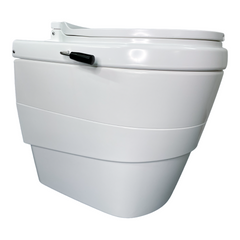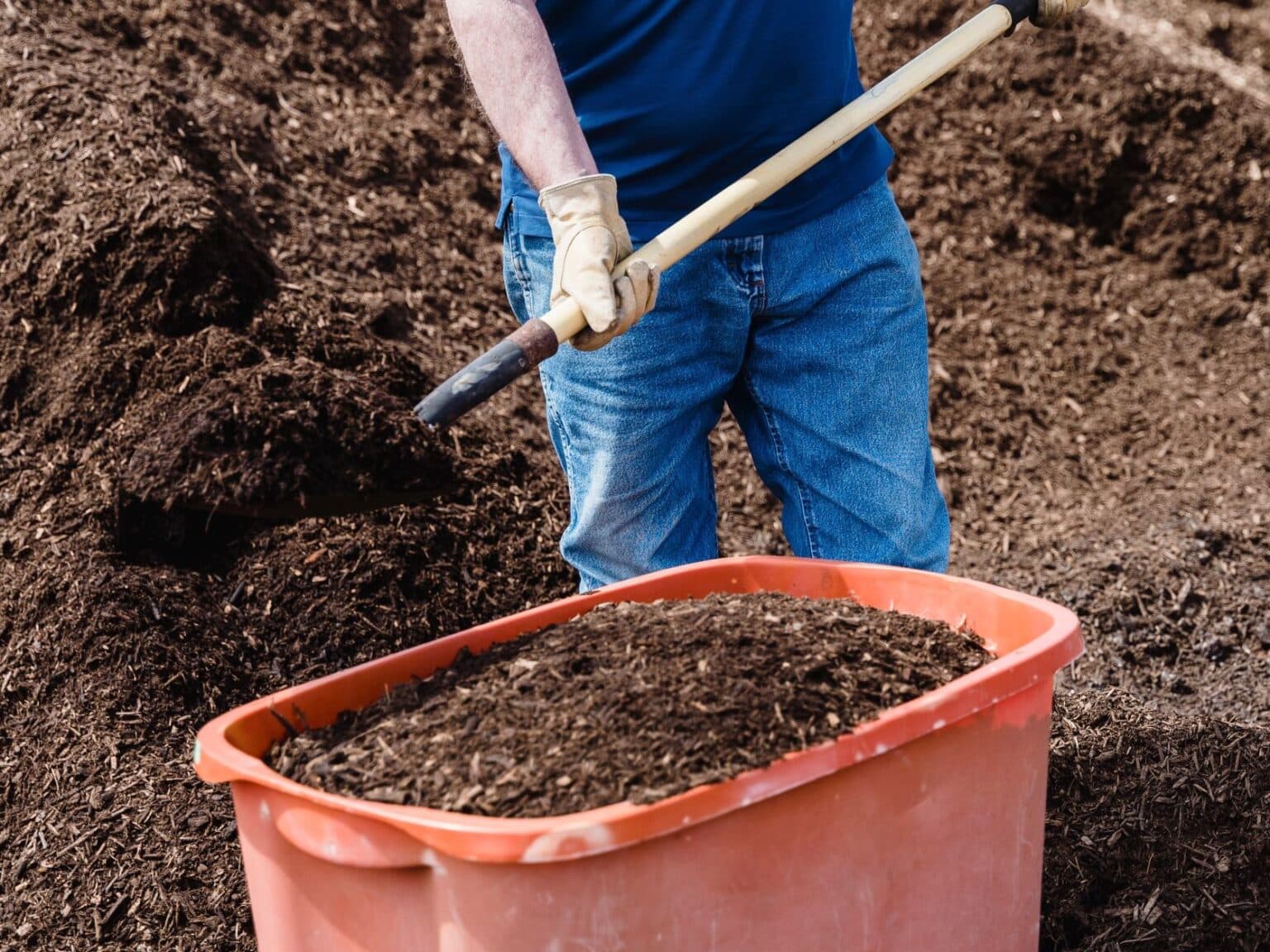Finding the right toilet solution is one of the biggest challenges in any RV or campervan build. Space is limited, plumbing can be complicated, and no one wants to deal with unpleasant odors on the road. Composting toilets have become a popular choice because they don’t require black water tanks, use little to no water, and are surprisingly easy to maintain.
In this guide, we’ll look at some of the best eco-friendly composting toilets for van life and RV travel. Each model has its own strengths—whether you’re focused on compact size, odor control, or long-term durability. To help you choose, we’ve included a side-by-side comparison table that highlights features, price ranges, and real-world pros and cons.
| Image | Model | Best For | Size / Weight | Key Features | Pros | Cons |
|---|---|---|---|---|---|---|
 | Nature’s Head (Spider Handle) | Our Pick | 20.98" L × 19.02" W × 20.98" H • 28 lb | Urine diverter; solids/liquids separated; built-in 12 V fan; hand-crank agitator | Compact for RV/van installs; reliable odor control when vented; simple upkeep | Needs vent routing; larger base than ultra-compact separators |
 | OGO Compost Toilet | Easy to Install | 15" L × 16" W × 18.38" H • 28 lb | Urine-diverting; compact body; exhaust fan; separate solids & liquids chambers | Small footprint; straightforward mounting; low routine maintenance | Less capacity than bigger units; venting still recommended |
 | Thinktank Composting Toilet (White) | Most Compact | 25.7" L × 22.5" W × 21.8" H • 27 lb | Airtight design; separate air intake & exhaust; men can stand; solids/liquids separation | Strong airflow and odor isolation; family-friendly capacity | Higher price tier; larger outer dimensions than tiny separators |
 | Sun-Mar GTG (Non-Electric, Self-Contained) | Largest Capacity | 33" L × 22.5" W × 33" H • 81.1 lb | Non-electric; self-contained; solids chamber + liquids holding tank | Works off-grid; robust build; longer emptying intervals | Heavier; bigger footprint; more involved install |
What Is A Composting Toilet?
A composting toilet is a type of toilet that uses a natural decomposition process to turn human waste into compost, rather than relying on chemicals or water to break down the waste. Composting toilets are an eco-friendly alternative to traditional standard toilets, as they use fewer resources and produce less waste. They are also well-suited for use in off-grid or remote boondocking locations where traditional plumbing is not available.
Composting self-contained toilets separate liquid and solid waste and use composting mediums or organic materials, such as peat moss or coconut coir, to help break down the waste. The solid waste is mixed with the composting medium in a chamber, where it begins to decompose over time. Once the composting process is complete, the compost can be removed from the toilet and used as a natural fertilizer in gardens or landscaping. Composting toilets are relatively low-maintenance and easy to use, making them a convenient and eco-friendly choice for managing human waste.
What Are The Different Types Of Composting Toilets?
There are several different types of composting toilets, each with its own unique features and benefits. Here are three of the main types of composting toilets:
- Self-contained composting toilets: These are a type of toilet that has all of the necessary components for the composting process contained within the toilet itself. This includes the solid waste composting chamber or container, as well as a composting medium to help break down the waste. Self-contained composting toilets are easy to install and use, and they are well-suited for use in small spaces like campervans and RVs.
- Central composting systems: Central composting systems are a type of toilet that is connected to a central unit that is located outside of the toilet. These systems typically have separate toilets for solid and liquid waste, and the waste is transported to the central composting unit for processing. Central composting systems are a good choice for larger homes or buildings where it is not practical to have a self-contained composting toilet in each bathroom.
- Bucket composting toilets: This are a simple and low-cost type of toilet that consists of a normal toilet seat and a bucket or solid waste container that is used to collect the waste. The waste is then mixed with a composting medium and allowed to decompose over time. Bucket composting toilets are a good choice for use in remote or off-grid locations.
What Are The Drawbacks Of A Compost Toilet?
There are a few potential drawbacks to using a composting toilet, including:
- Limited capacity: Some composting toilets, particularly smaller self-contained models, have limited capacity and may need to be emptied more frequently than traditional flush toilets.
- Initial cost: Composting toilets can be more expensive than traditional flush toilets, especially if you need to purchase a central composting unit or make other changes to your plumbing system.
- Maintenance: Composting toilets require regular maintenance, including emptying the solid and liquid waste chambers and replacing the composting medium. This can be a bit more time-consuming than simply flushing a traditional toilet connected to a black tank. Composting toilet users typically carry a spray bottle of vinegar/water or baking soda/water solution for sanitation purposes.
- Odors: While most modern composting toilets are designed to reduce odors, some users may still notice a slight smell, especially if the toilet is not properly maintained.
- Limited availability: Composting toilets are not as widely available as traditional flush toilets, so they may not be an option in some locations.
- Education: Some people may be hesitant to use a composting toilet due to a lack of understanding about how they work or concerns about hygiene. It may be necessary to educate users about the composting process and proper maintenance of the toilet.
Do You Put Toilet Paper In A Composting Toilet?
Yes, you can put toilet paper in a composting toilet. In fact, toilet paper is an important part of the composting process, as it helps to absorb liquids and break down waste. Most composting toilets have separate solid and liquids containers, and toilet paper goes into the solid waste chamber. It’s important to follow the manufacturer’s instructions for using toilet paper with your specific composting toilet, as different models may have different requirements.
Where Do You Empty A Compost Toilet?
The solid waste chamber of a composting toilet should be emptied every few weeks, depending on usage. When it’s time to empty the toilet, the composting medium and waste can be removed from the solid waste compost chamber using a spout or other mechanism provided by the manufacturer.
Once the solid waste has been removed from the composting toilet, it can be disposed of in a number of different ways. One option is to use the compost as a natural fertilizer in gardens or landscaping. The compost can also be placed in a compost bin or heap to continue the decomposition process. Alternatively, the compost can be taken to a composting dump station where it can be professionally managed and turned into compost.
It’s important to follow the manufacturer’s instructions for disposing of the waste from your specific composting toilet, as different models may have different requirements. Proper disposal of waste from a composting toilet is essential to maintain the effectiveness and efficiency of the composting process.
Is There A Composting Toilet You Don’t Have To Empty?
There are some composting toilets that are designed to minimize the need for frequent emptying. These toilets typically have larger capacity solid waste chambers and may use a more efficient composting process to help reduce the amount of waste that needs to be removed after full-time use. However, it is important to note that all composting toilets will eventually need to be emptied, as the waste and composting medium will accumulate over time.
There are also some newer composting toilet designs that use a hybrid system, in which solid waste is composted while liquid waste is treated using a separate process, such as evaporation or filtration. These systems may produce less waste overall and may require less frequent emptying of the solid waste chamber.
Overall, while it is possible to find composting toilets that minimize the need for regular emptying, it is important to understand that all composting toilets will need to be emptied at some point. Proper maintenance and use of the toilet, including following the manufacturer’s instructions for emptying and disposal of the waste, is essential to maintaining the effectiveness and efficiency of the composting process.
Our Choices For The Best Composting Toilets For RVs and Campervans
Our Pick
- No one – and I mean no one – will beat my customer service and individual support
- Easy to install by any reasonably handy person.
- Absolutely No Odor. No Maintenance. 5 Year Warranty.

Nature’s Head Composting Toilet
The Nature’s Head composting toilet for RVs is a popular choice due to its small size and easy maintenance. It features a urine diverter and separate chambers for solid and liquid waste, which allows for more efficient composting.
The solid waste tank is designed to be used with peat moss or coconut coir as a composting medium, which helps to break down the waste and reduce odors. The toilet also has a built-in ventilation fan to help control odors, which can be a major concern in small spaces like campervans and RVs. The vent fan will need a vent pipe installed to conduct the decomposing gasses outside.
One of the major advantages of the Nature’s Head composting toilet is its compact size. It measures just 19 inches wide, 21 inches deep, and 21 inches tall, making it easy to fit into even the smallest of spaces. The toilet is also designed to be easy to install, with a simple mounting system that allows you to secure it to the floor or wall of your campervan or RV.
In terms of maintenance, the Nature’s Head composting toilet is relatively low-maintenance. The solid waste chamber needs to be emptied every few weeks, depending on usage, and the liquid waste chamber should be emptied every few days.
The toilet also comes with a spout that allows you to easily remove the composting medium from the solid waste chamber when it’s time to empty it. Overall, the Nature’s Head composting toilet is an easy-to-use and low-maintenance option that is well-suited for use in campervans and RVs.
Easy To Install
- ODORLESS: The separation function effectively prevents the formation of odors. By avoiding chemicals and water, you are …
- BUILT TOUGH: Manufactured and assembled in Ohio, USA with quality built in. Clean and simple design holds up to 550lbs.
- HYGIENIC: Removable solids bin and urine bottle make it easy to empty and clean. Waste capacity for solids waste is 25-3…

OGO Composting Toilet
The OGO composting toilet is another compact option that is well-suited for use in campervans and RVs. Like the Nature’s Head composting toilet, it features a urine diverter and separate chambers for solid and liquid waste, as well as an exhaust fan to help control odors. The OGO composting toilet is designed to be used with peat moss or coconut coir as a composting medium, which helps to break down the waste and reduce odors.
One of the key advantages of the OGO portable toilet is its compact size. It measures just 18 inches wide, 26 inches deep, and 20 inches tall, making it easy to fit into even the smallest of spaces. The toilet is also designed to be easy to install, with a simple mounting system that allows you to secure it to the floor or wall of your campervan or RV.
In terms of maintenance, the OGO portable composting toilet is relatively low-maintenance. The solid waste chamber needs to be emptied every few weeks, depending on usage, and the liquid waste chamber should be emptied every few days. The toilet also comes with a spout that allows you to easily remove the composting medium from the solid waste chamber when it’s time to empty it. Overall, the OGO composting toilet is an easy-to-use and low-maintenance option that is well-suited for use in campervans and RVs.
Most Compact
- Brand New Composting Toilet solves major problems with existing compost toilets.
- Airtight with separate air intake and exhaust pipes. No loss of heated or cooled air.
- Men can stand when using!
Thinktank Composting Toilet
The Thinktank composting toilet is a more heavy-duty option that is designed to handle the waste of up to six people. It features a urine diverter and separate chambers for solid and liquid waste, as well as a built-in fan to help control odors. The solid waste chamber is designed to be used with peat moss or coconut coir as a composting medium, which helps to break down the waste and reduce odors.
One of the key advantages of the Thinktank composting toilet is its larger tanks which increase capacity. It is designed to handle the waste of up to six people, making it a good choice for larger families or groups traveling in an RV. The toilet is also made from durable materials, including a high-strength plastic seat and lid, which makes it well-suited for life on the road.
In terms of maintenance, the Thinktank composting toilet is relatively low-maintenance. The solid waste chamber needs to be emptied every few weeks, depending on usage, and the liquid waste chamber should be emptied every few days. The toilet also comes with a spout that allows you to easily remove the composting medium from the solid waste chamber when it’s time to empty it. Overall, the Thinktank composting toilet is a durable and easy-to-use option that is well-suited for use in larger campervans and RVs.
Largest Capacity
Sun-Mar Excel Composting Toilet – Non-Electric Self-Contained
Sun-Mar Composting Toilets are a top choice for those looking for an eco-friendly and convenient way to manage human waste without needing a power source. This high-quality composting toilet is made by Sun-Mar, a leading manufacturer of composting toilets and other eco-friendly products.
One of the standout features of the Sun-Mar Excel toilet is its non-electric design. This means that it does not require electricity to operate, making it a great choice for use in off-grid or remote locations. The toilet is also self-contained, meaning that all of the necessary components for the composting process are contained within the toilet itself. This includes the solid and liquid waste chambers, as well as a composting medium to help break down the waste.
The Sun-Mar Excel toilet has a separate solids chamber for solid waste and a holding tank for liquid waste. The solids chamber should be emptied every few weeks, and the holding tank should be emptied every few days. The toilet comes with a spout that allows you to easily remove the composting medium from the solids chamber when it’s time to empty it. The solid and liquid waste can then be disposed of in a number of different ways, including using compost as a natural fertilizer in gardens or landscaping.
Overall, the Sun-Mar Excel Non-Electric Self-Contained Compost Toilet system is a durable and convenient option for those looking for an eco-friendly way to manage human waste. Its non-electric design, self-contained construction, and efficient composting process make it a top choice for use in campervans, RVs, and other small spaces. If you are considering a composting toilet for your home or business, the Sun-Mar Excel is definitely a step worth considering.
In Conclusion
Composting toilets are a great eco-friendly option for those living the nomadic life in a campervan or RV. The Nature’s Head, Sun-Mar Mobile, and Airhead composting toilets are all excellent choices that offer convenience, comfort, and ease of use. Whether you’re looking for compact composting toilet designs, traditional toilet experiences, or lightweight and portable composting toilet options for your camping trip, one of these toilets are sure to fit your needs.






